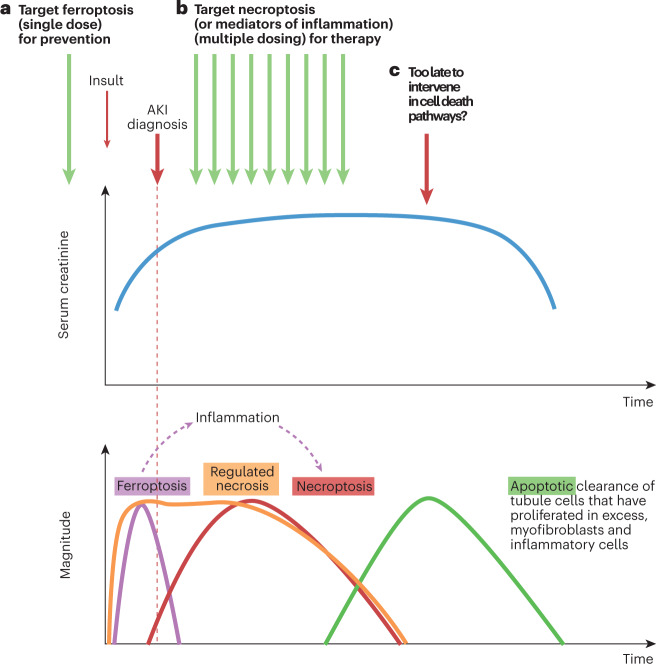Fig. 6. Interactions between different forms of cell death and their impact on the design of therapeutic approaches for different contexts of use in AKI.
a, In a hypothetical scenario in which an insult causes an initial wave of cell death (for example, an early wave of ferroptosis-induced tubule cell death), the specific form of cell death may be targeted using a preventive approach; for example, with prophylactic administration of an inhibitor. This preventive intervention may avoid the initial wave of cell death and all subsequent consequences, including the development of acute kidney injury (AKI). b, If unchecked, the initial wave of regulated necrosis might result in the release of damage-associated molecular patterns (DAMPs) that triggers inflammation and a second wave of inflammatory cytokine-mediated regulated necrosis, such as necroptosis. In this scenario, a single preventive administration of a cytokine or necroptosis inhibitor will not prevent AKI, as it will not prevent the original wave of cell death caused by ferroptosis. However, necroptosis or other forms of inflammation-related cell death may be amenable to treatment, for example, through initiation of therapy after injury has occurred. This scenario represents the usual clinical situation, in which interventions are prescribed after diagnosis of AKI. Therapy would be expected to be maintained over several days, since DAMPs will be continuously released by ongoing cell death. Successful treatment will not prevent AKI but will accelerate recovery by interfering with the amplification loop of inflammation-related cell death. Biomarkers of regulated necrosis will be needed to assess whether cell death is still ongoing and if so, what is the predominant active mode of kidney cell death. c, In advanced stages of AKI, apoptotic cell death acts to clear excess myofibroblasts and leukocytes as well as excess tubule cells; at this stage, interference with apoptosis might be deleterious while targeting other forms of cell death might be futile. This conceptual representation is based on observations in a mouse model of AKI induced by a folic acid overdose96,103,104 and on descriptions of morphological apoptosis during the recovery phase of human AKI105. The role of ferroptosis in the early stages of this preclinical model and of the contribution of necroptosis to longer term outcomes has been validated in several studies117,143. However, validation of this conceptual representation for forms of human AKI requires further studies and clinical trials.

